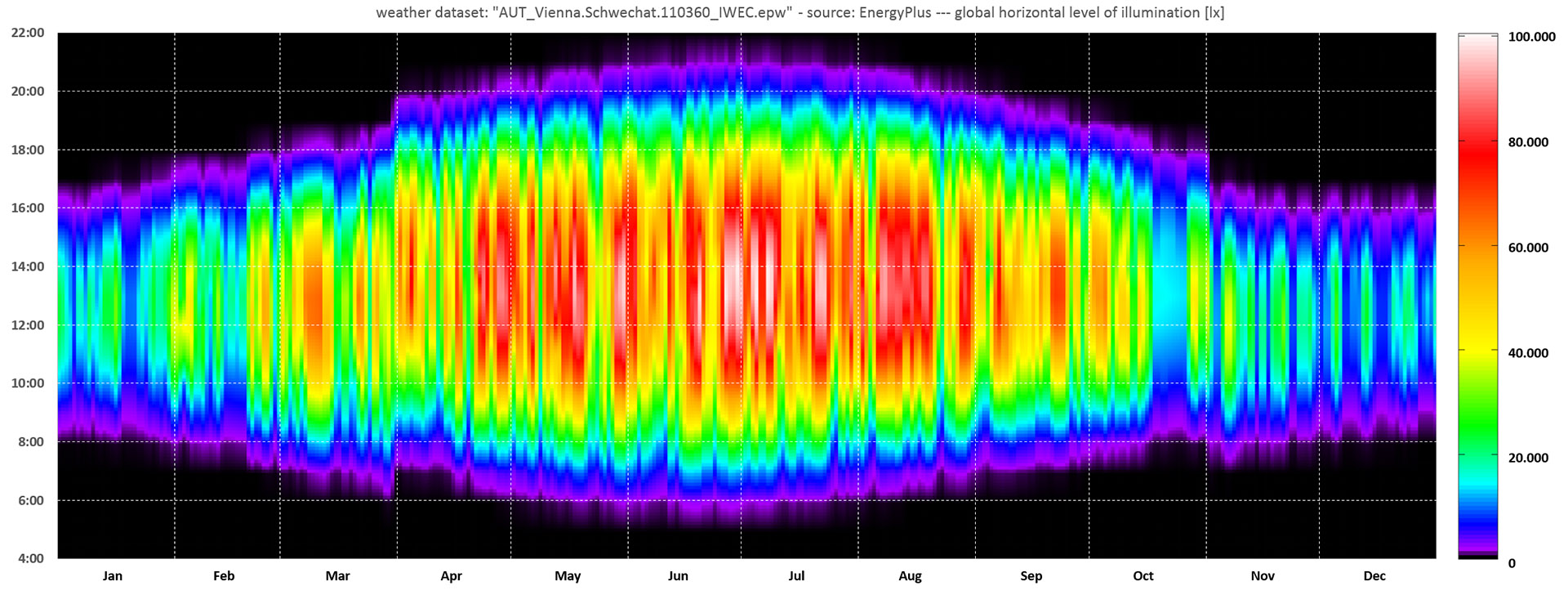Advantages of daylight usage
• Well-being and health
• Link to the outside
• Dynamic changes of daylight
• Full spectral distribution and broad spectral efficacy
• Circadian and biological effects
• Maximizing of productivity
• Natural shadows
• High potential for energy saving
Challenges in daylight-planning
In order to create well-balanced space illumination, glare needs to be eliminated (e.g. at workstations) and to control energy input, direct sunlight needs to be reduced or completely avoided.
Daylight planning is further complicated by a constantly changing light source. Special tools help us to exactly determine parameters such as solar altitude and shading, allow us to precisely analyse weather data and incorporate these into our calculations.
Very often even simple solutions can achieve excellent results.

Requirements for daylight planning
• Determination of set points and definition of daylight-systems / solar protection / glare protection
• Analysis of solar radiation / shading / implementation of worldwide weather data
• Examination of feasibility (if engineering services are required)
• Specification of daylight factors and threshold values for adding artificial light within daylit rooms by using simulation software
• Optimization of the energy balance of a building
• Minimising of glare and maximisation of prospect
• Specification of automated, daylight-dependent control systems

Special solutions for daylight-illumination – Example of skylight development
Scope
Blending of directed reflexion of sunlight (sun spots) with diffused sunlight
Concept
Faceted anti-glare parabola in combination with variable, light-diffusing dome
Specifications
• Sunspots on floor and diffuse light fraction complement each other
• Sunspots are never to exceed a certain cut-off angle (glare limitation)
• The ratio of sun figurations and diffused light shall be variable
• Colour temperature (spectrum), amount of light and light distribution are dynamic factors when working with daylight. Those changes shall be perceptible and establish a connection to the world and weather outside
• Energy input shall be minimal by using a minimal roof opening
• Daylight shall reach the heart of the building
